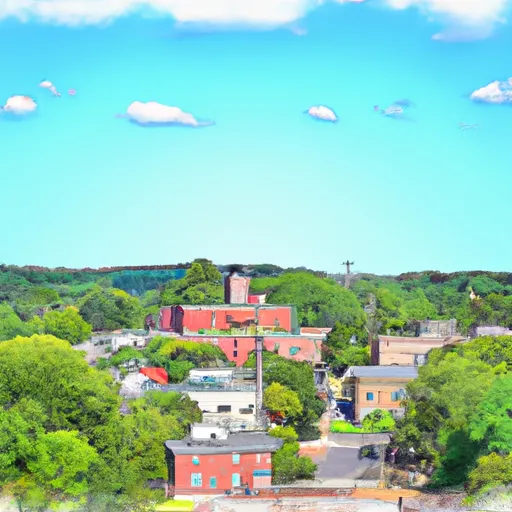-
 Snoflo Premium
Snoflo Premium
Get unlimited access to all our content
With no Ad interruptions! - Start Your Free Trial Login with existing account
Windsorville
Eden Index
Climate
9.4
•
Recreation
3.5
•
Community
5.1
•
Safeguard
6.3/10

Windsorville, Connecticut is a small town located in Tolland County. The climate in Windsorville is classified as humid continental, characterized by warm summers and cold winters. Summers are typically mild with average temperatures ranging from the low 70s to the high 80s Fahrenheit, while winters experience colder temperatures, often below freezing, with average lows in the 20s Fahrenheit. Precipitation is evenly distributed throughout the year, with rainfall occurring mostly during the summer months.
Windsorville is surrounded by several bodies of water, including the Scantic River and Shenipsit Lake. These hydrological features offer opportunities for fishing, boating, and kayaking. The Scantic River is known for its scenic beauty and is a popular spot for canoeing and birdwatching.
In terms of outdoor recreation, Windsorville is home to several parks and trails. The Shenipsit State Forest, located nearby, offers a variety of trails for hiking and mountain biking. The Podunk Wildlife Management Area provides opportunities for hunting, trapping, and wildlife viewing.
Overall, Windsorville, Connecticut offers a diverse climate, picturesque waterways, and various outdoor recreation opportunities, making it an attractive destination for nature enthusiasts and outdoor adventurers.
What is the Eden Index?
The Snoflo Eden Index serves as a comprehensive rating system for regions, evaluating their desirability through a holistic assessment of climate health, outdoor recreation opportunities, and natural disaster risk, acknowledging the profound impact of these factors on livability and well-being.
Climate Health Indicator (CHI): 9.4
Windsorville receives approximately
1197mm of rain per year,
with humidity levels near 76%
and air temperatures averaging around
10°C.
Windsorville has a plant hardyness factor of
6, meaning
plants and agriculture in this region thrive during a short period during spring and early summer. Most
plants will die off during the colder winter months.
By considering the ideal temperature range, reliable water supplies, clean air, and stable seasonal rain or snowpacks, the Climate Health Indicator (CHI) underscores the significance of a healthy climate as the foundation for quality living.
A healthy climate is paramount for ensuring a high quality of life and livability in a region, fostering both physical well-being and environmental harmony. This can be characterized by ideal temperatures, reliable access to water supplies, clean air, and consistent seasonal rain or snowpacks.
Weather Forecast
Streamflow Conditions
Lower Connecticut
Area Rivers
Lower Connecticut
Snowpack Depths
Lower Connecticut
Reservoir Storage Capacity
Lower Connecticut
Groundwater Levels
Recreational Opportunity Index (ROI): 3.5
The Recreational Opportunity Index (ROI) recognizes the value of outdoor recreational options, such as parks, hiking trails, camping sites, and fishing spots, while acknowledging that climate plays a pivotal role in ensuring the comfort and consistency of these experiences.
Access to outdoor recreational opportunities, encompassing activities such as parks, hiking, camping, and fishing, is crucial for overall well-being, and the climate plays a pivotal role in enabling and enhancing these experiences, ensuring that individuals can engage in nature-based activities comfortably and consistently.
Camping Areas
| Campground | Campsites | Reservations | Toilets | Showers | Elevation |
|---|---|---|---|---|---|
| Barton Cove | 30 | 206 ft | |||
| Erving State Forest | 29 | 610 ft | |||
| Westover ARB Military | None | 237 ft |
Nearby Fishing
Nearby Ski Areas
Catastrophe Safeguard Index (CSI):
The Catastrophe Safeguard Index (CSI) recognizes that natural disaster risk, encompassing floods, fires, hurricanes, and tornadoes, can drastically affect safety and the overall appeal of an area.
The level of natural disaster risk in a region significantly affects safety and the overall livability, with climate change amplifying these risks by potentially increasing the frequency and intensity of events like floods, fires, hurricanes, and tornadoes, thereby posing substantial challenges to community resilience and well-being.
Community Resilience Indicator (CRI): 5.1
The Community Resilience Indicator (CRI) recognizes that education, healthcare, and socioeconomics are crucial to the well-being of a region. The CRI acknowledges the profound impact of these elements on residents' overall quality of life. By evaluating educational resources, healthcare accessibility, and economic inclusivity, the index captures the essential aspects that contribute to a thriving community, fostering resident satisfaction, equity, and social cohesion.

